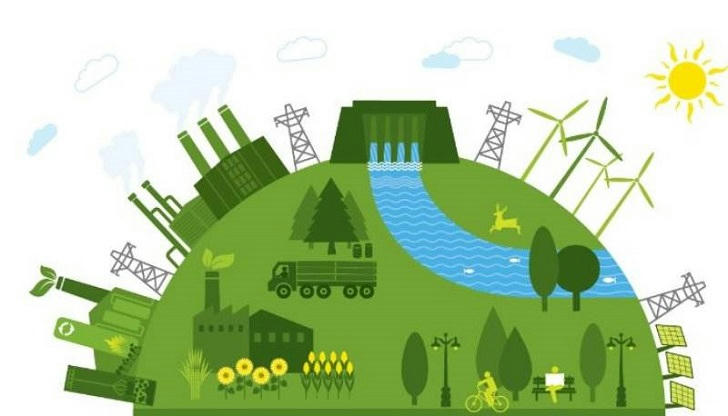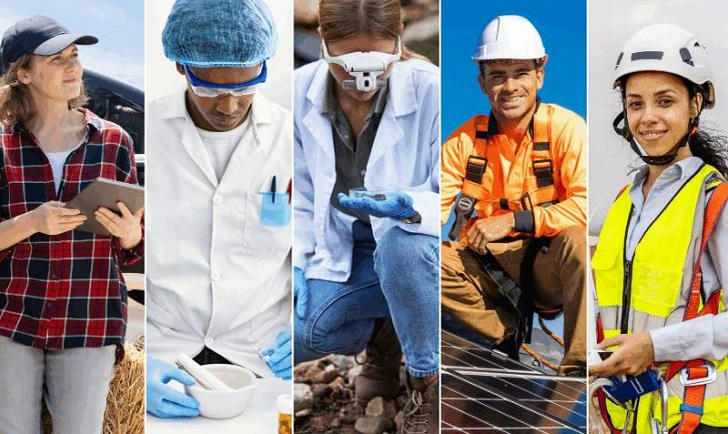Green Jobs Are Taking Over
“Green jobs” are no longer niche. They’re no longer just for tree-huggers, solar panel installers, or electric car engineers. These roles are now everywhere—from construction to consulting, farming to finance. The shift toward sustainability isn’t just changing how we live. It’s completely transforming how we work.
This is more than a trend. It’s a tectonic shift in the labor market. And it might just be the most important employment revolution of the 21st century.
What Are Green Jobs, Anyway?
Let’s break it down. A green job is any job that contributes to preserving or restoring the environment. That can mean reducing pollution, increasing energy efficiency, conserving natural resources, or supporting sustainable practices.
The International Labour Organization (ILO) defines green jobs as those that help “protect ecosystems and biodiversity, reduce energy and material consumption, decarbonize the economy, and minimize waste and pollution.”
But don’t get caught up in the jargon. In simple terms: green jobs make the planet less of a dumpster fire.

Green Jobs Are Booming
This isn’t just talk—it’s a hiring spree.
According to the U.S. Bureau of Labor Statistics, green careers like wind turbine technician and solar photovoltaic installer are among the fastest-growing jobs in America. The clean energy sector already supports over 3 million U.S. workers, with tens of millions more expected globally by 2030.
That number will only grow as governments invest billions into green infrastructure, electric vehicles, energy efficiency, and climate resilience. The Inflation Reduction Act alone allocates $369 billion toward clean energy and climate action—and much of that goes straight to job creation.
We’re talking everything from:
Renewable energy installers
Green construction workers
Energy auditors
Carbon accountants
Urban farmers
Electric vehicle mechanics
Circular economy specialists
Environmental data scientists
Even industries you wouldn’t expect—like finance, marketing, and logistics—are going green. Wall Street is hiring ESG (Environmental, Social, Governance) analysts like crazy. Fashion brands need sustainable sourcing managers. Tech giants are investing in climate-tech startups.
If you're still stuck on “green jobs = landscaping,” you're about a decade behind.
Why Green Jobs Matter (More Than You Think)
Sure, green jobs sound nice. Eco-friendly. Moral. But they’re not just about saving the whales—they’re about saving the economy.
1. They’re Recession-Resistant
While traditional sectors get battered by global shocks, green jobs are proving unusually resilient. Energy efficiency upgrades, solar power installations, and electric vehicle transitions don’t stop during downturns—they often accelerate as part of recovery packages.
In fact, many countries (including the U.S.) are betting their entire economic future on green growth.
2. They Pay Well
The average solar energy technician makes over $50,000 a year. Wind turbine techs can earn upwards of $60,000 with just an associate degree. Many green jobs pay more than their conventional counterparts—and come with better long-term prospects.
Not to mention the growing number of high-paying white-collar green jobs in engineering, policy, data science, and beyond.
3. They’re Future-Proof
Automation may wipe out millions of traditional jobs, but green roles often require human skills that are hard to replicate: problem-solving, critical thinking, adaptability. As climate challenges evolve, these jobs will only become more essential.
The Many Faces of the Green Economy
The green economy isn’t one thing—it’s a massive, multi-industry transformation. Let’s break down some of its fastest-growing areas:
Clean Energy
This is the crown jewel. Think wind, solar, hydro, geothermal, and battery storage. The clean energy transition is spawning jobs across manufacturing, installation, maintenance, and research.
Every solar panel installed is a paycheck. Every wind turbine is a career.
Green Construction
From LEED-certified buildings to retrofitting old homes for energy efficiency, green construction is booming. Workers are needed for insulation, HVAC, smart home systems, and more.
It’s not just building new stuff—it’s making everything more efficient.
Sustainable Agriculture
Vertical farming. Organic food production. Regenerative agriculture. These are more than buzzwords—they’re job markets. America’s food system is under pressure to become more sustainable, and new farming models are stepping up.
And yes, “urban beekeeper” is a real job now.
Circular Economy
Think recycling, composting, upcycling, and product reuse. The circular economy is all about designing out waste. It needs innovators, logistics experts, materials scientists, and retail strategists.
Your trash might just be someone else’s job description.
Environmental Tech & Data
AI-powered wildfire detection. Climate modeling software. Carbon tracking platforms. Tech is going green, and it needs people who can build, analyze, and optimize it.
If you can code and care about the environment, you’re golden.

The Risks and Roadblocks
Let’s not pretend everything’s perfect. The green job boom comes with challenges.
1. Skills Gap
There’s massive demand, but not enough trained workers. We need welders who can work on wind turbines, electricians who understand solar arrays, and planners who can design eco-smart cities. Fast.
2. Unequal Access
Green jobs often require specialized training or certifications—not always accessible to lower-income communities. Without targeted investment, the green economy could worsen inequality instead of solving it.
3. Greenwashing
Some companies slap the word “green” on roles that are anything but. Watch out for vague job titles and empty promises. Not every “eco-friendly” brand walks the walk.

How to Get Involved (Today)
So, you’re intrigued. Maybe even inspired. How do you actually break into the green job world?
Step 1: Audit Your Skills
Make a list of what you already do well. Then research how those skills fit into green sectors. You’d be surprised how many traditional roles have green equivalents.
Step 2: Get Educated
Check out training programs from:
Community colleges
Online platforms like Coursera, edX, and FutureLearn
Organizations like Green For All, Solar Energy International, and the Green Jobs Network
You don’t need to go back to school for four years. Often, a certificate or short course is enough.
Step 3: Start Small
Look for internships, volunteer gigs, or side projects with green orgs. Get your foot in the door and build credibility.
Step 4: Stay Updated
The green job space evolves fast. Follow climate news. Read about sustainability trends. Join LinkedIn groups and local green networks.
Final Thought: This Isn’t Optional
Let’s be brutally honest: Green jobs aren’t just a feel-good movement. They’re a planetary necessity. Climate change is here. Extreme weather, rising seas, wildfires, supply chain chaos—this is the new normal.
But every crisis is also an opportunity.
The green economy offers not just a lifeboat—but a better boat. One that’s cleaner, smarter, more inclusive, and—if we build it right—more fulfilling.
So whether you’re a student, a mid-career switcher, or just someone who wants to do work that matters—now’s the time.
Green jobs aren’t coming.
